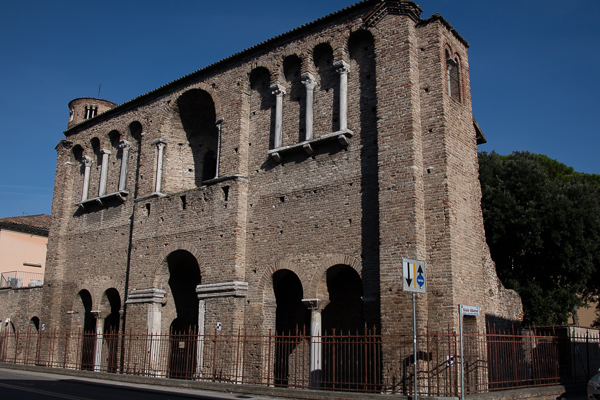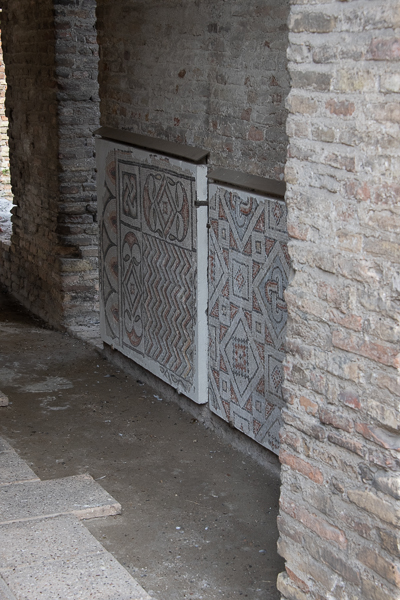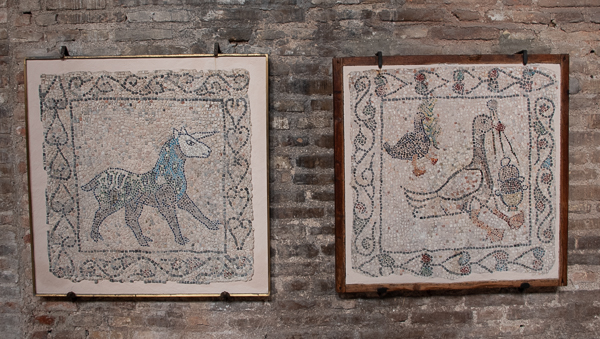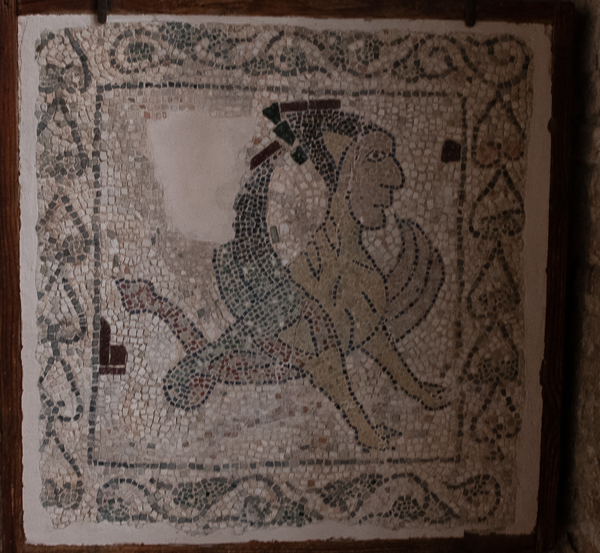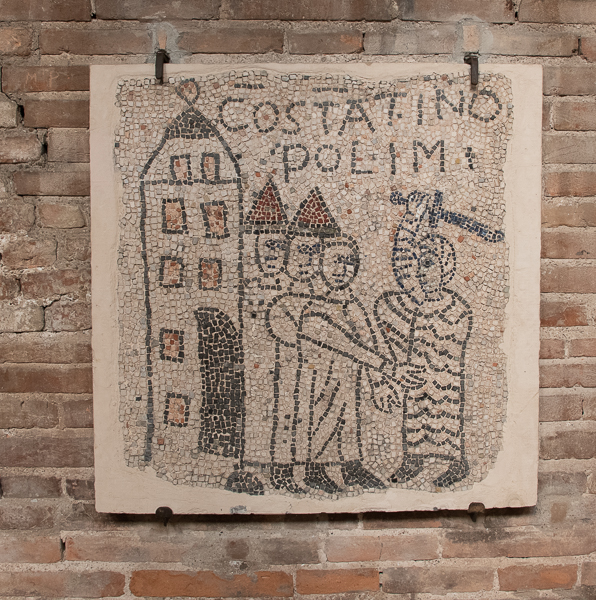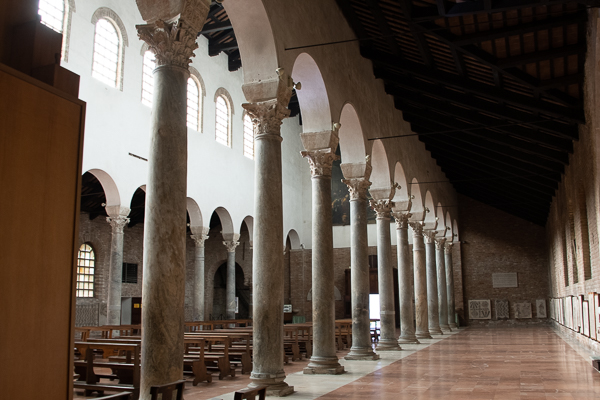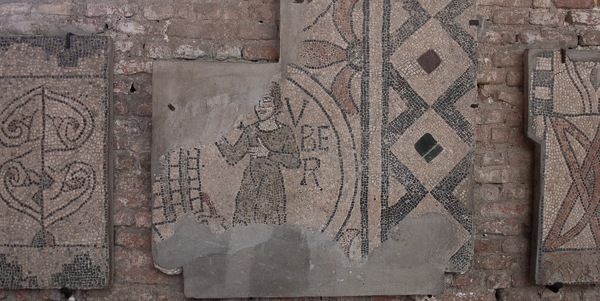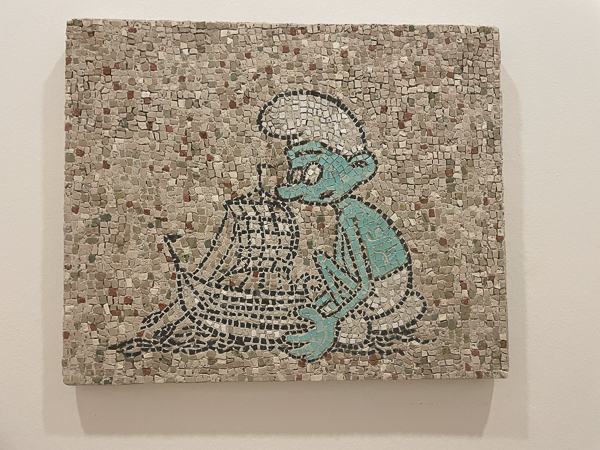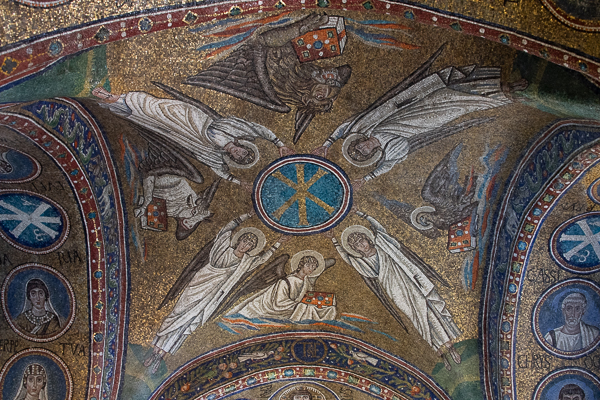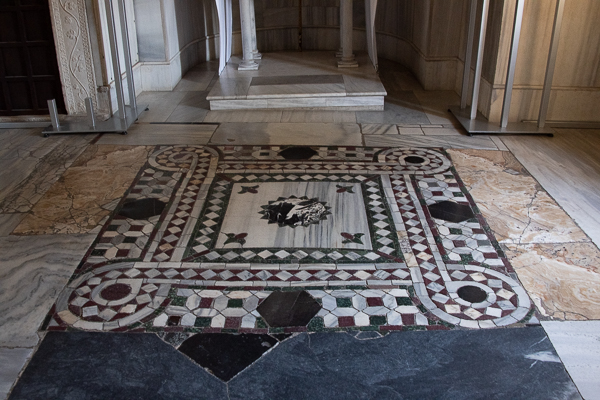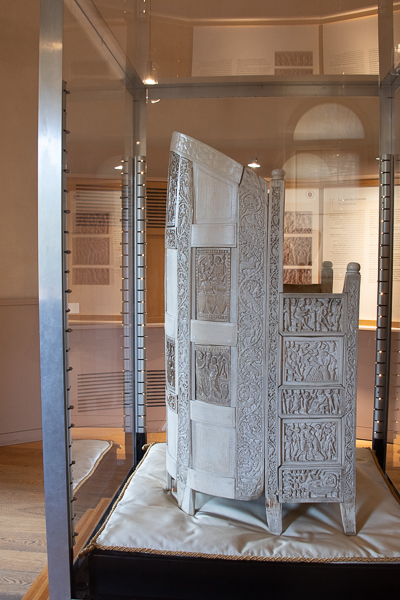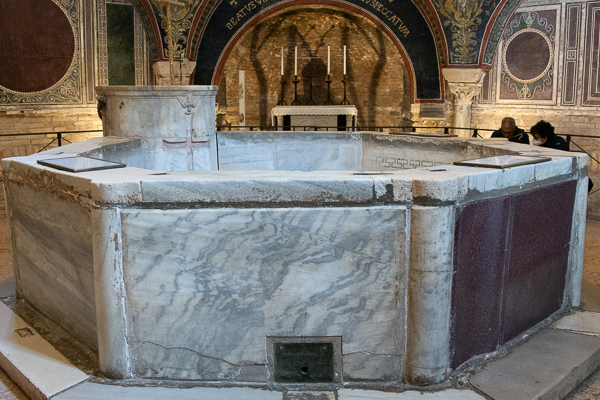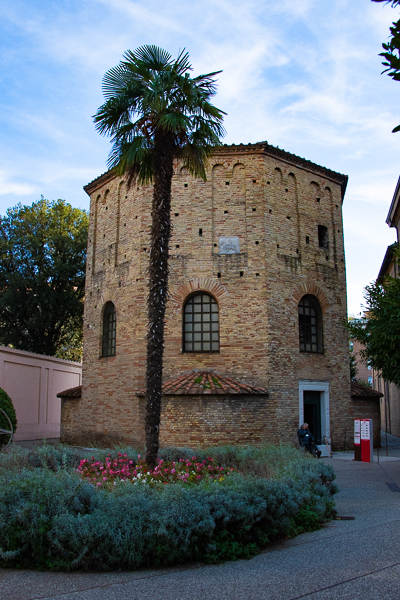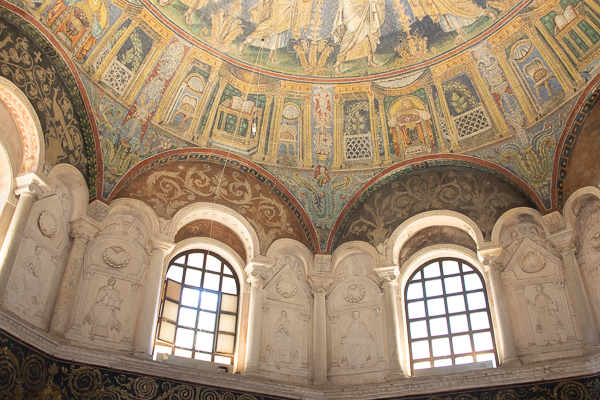November 2022
Ravenna is a very quiet town at this time of year. There are very few people and almost no cars, making access to everything easy, and fairly clear of tourists.
The main reason people come to Ravenna is the mosaics. And rightfully so, as they are worth a trip. However, the city holds such a large collection it does take more than one day to absorb. This large number is a result of mother nature being kind to Ravenna* and the fact that it suffered very little during World War II.
What is left today of the so-called Palazzo di Teodorico dates from the 7th or 8th century, and was built during the Byzantine Exarchate period as a gatehouse structure for access to the Imperial Palace. The Palazzo was closed for repairs but you can peek in and see a hand full of mosaics that are said to be from the area around the Palazzo.
I start with these as they are simple in design and construction materials.
San Giovanni Evangelista
These mosaics date from 1213 and are incredibly simplistic. Along the walls of the San Giovanni Evangelista, church hangs a disparate collection of images from line ‘drawings’ describing the Fourth Crusade to signs of the zodiac, an upside-down angel, and some strange mythical beasts.
*
Originally embedded in a church floor, the images depicted in the mosaics were apparently intentionally crude in order to tell their story in plain, straightforward ways for the illiterate churchgoers.
Fortunately, the church was completely empty because when my travel mate Susan said this one was calling Uber I guffawed a little too loud.
*
The Art Museum of the City of Ravenna, as part of the 7th edition of the Biennale of Contemporary Mosaics 2022, is presenting Prodigy Kid, an extensive exhibition by artists Francesco Cavaliere and Leonardo Pivi. Both artists often work in mosaics.
From here the mosaics become elaborate, elegant, and obvious of and for the highborn.
Capella di Sant Andrea
The mosaics of the chapel date back to Bishop Peter II (494-519) in the Theodorician period, at the time of the coexistence in Ravenna of the two religious faiths: the Arian one and the Orthodox (catholic) one. The Capella di Sant Andrea is on the second floor of the Archiepiscopal Museum. It is an example of an early Christian archbishop’s chapel and the only building of Orthodox worship built during Theodorician Arianism. Arianism in this context is Christological doctrine first attributed to Arius, a Christian from Alexander, Egypt, and has nothing to do with the word that is spelled with a y.
Among the many valuable pieces in the museum, is the ivory throne of Maximian (Archbishop Maximianus of Ravenna). The work is in what has been called the “Justinianic style” of early Byzantine art.
Battistero Neoniano
The most ancient monument remaining in the city of Ravenna was partly erected on the site of a Roman bath. The octagonal brick structure was erected during the late Western Roman Empire by Bishop Ursus at the end of the 4th or beginning of the 5th century. The baptistery was finished by Bishop Neon at the end of the 5th century, at which time the mosaic decorations were added.
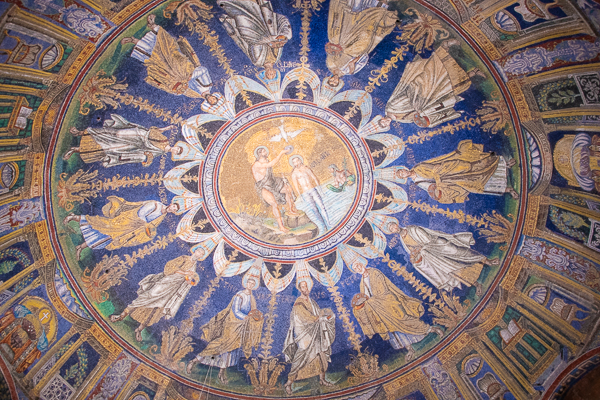
The Central Dome of the Baptistery features Christ immersed to his ankles in the waters of the Jordan, with John the Baptist: it is the oldest witness of a mosaic depicting Christ’s baptism inside a monument. Christ is surrounded by the figures of the Twelve Apostles.
*By this I meant there have been few damaging earthquakes, however, the following morning I did experience a 4.9 one.
